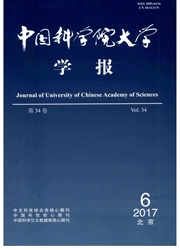

 中文摘要:
中文摘要:
根据蜻蜒拍翼前飞激发的流场具有St≥1/m的特点,在理论模化框架下,采用势流假设,用二维变形体前、后缘脱涡的面元法研究了前飞模型蜻蜒翼在周期性拍动中动态柔性变形引起的气动力响应.通过比较柔性模型翼和刚性模型翼气动力随时间的变化,发现在下拍行程中动态柔性变形显著地提高了升力和推力;值得注意的是,蜻蜓前飞时,翼的实际柔性变形幅值恰处于一个最佳范围内,它大幅地提高了升力,同时使消耗的气动功率趋近于最低,有利于蜻蜒维持前飞状态.
 英文摘要:
英文摘要:
Theoretical modeling is effective for studying the flow aroused by wings of dragonfly in flapping flight, which is highly unsteady, i.e., characterized as St≥1/Re. The aerodynamic effects of a model wing with timechanging deformation during cyclic wing beats in dragonfly forward flight are investigated, using the two-dimensional panel method. In this study, the dragonfly wing is modeled as a two-dimensional deformable plate, and the panel method is improved to deal with vortex shedding from both leading- and trailing-edges of the plate. Results show that lift is enhanced greatly during down-stroke stage of the flexible wing, compared with that in the rigid case. The actual amplitude of the wing deformation helps to reduce the mean aerodynamic power and enhance lift, which means a longer-time forward flight is available.
 同期刊论文项目
同期刊论文项目
 同项目期刊论文
同项目期刊论文
 期刊信息
期刊信息
